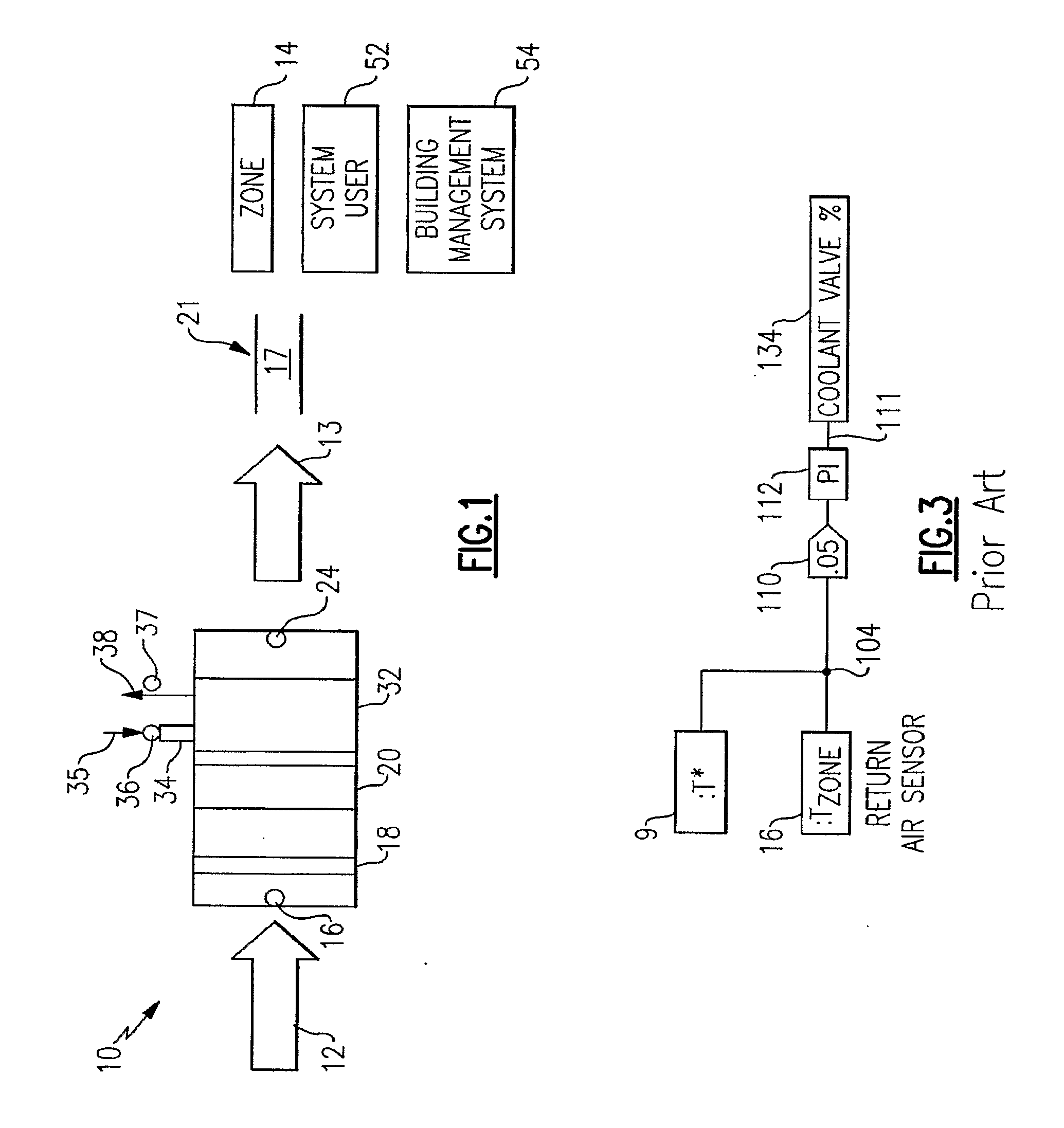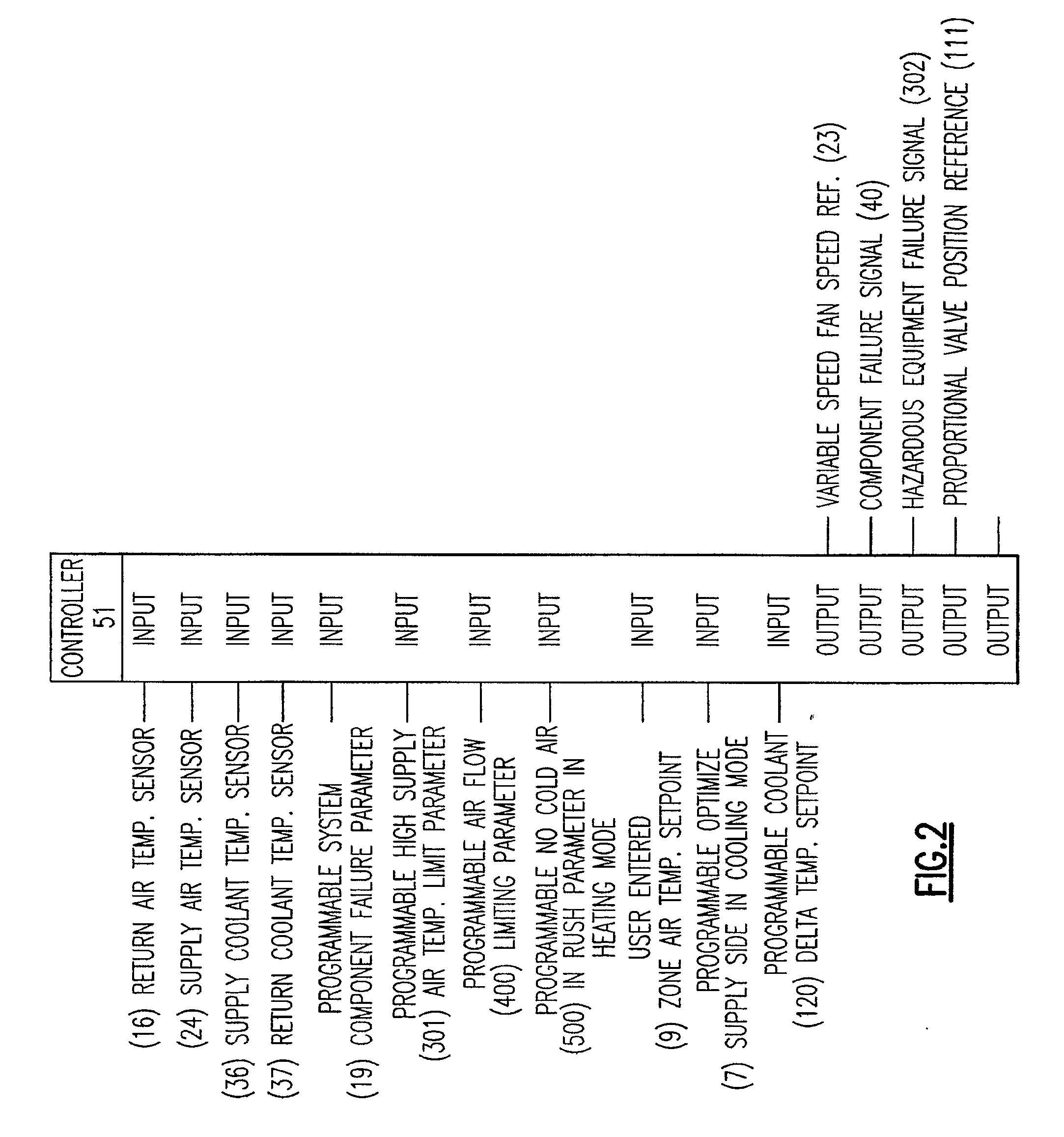Air-conditioning control algorithm employing air and fluid inputs
a technology of air and fluid inputs, applied in the direction of computer control, refrigeration components, ratio control, etc., can solve the problems of increasing equipment wear, periodic temperature fluctuations, and not being able to provide for optimization of the temperature fluctuations of the coolant fluid
- Summary
- Abstract
- Description
- Claims
- Application Information
AI Technical Summary
Benefits of technology
Problems solved by technology
Method used
Image
Examples
Embodiment Construction
[0019]Referring initially to FIG. 1, there is illustrated a diagrammatical depiction of a zone air-conditioning system generally referenced at 10, that illustrates a direction of air flow coming into the system 12, from the air-conditioned zone 14 and a direction of conditioned air flow exiting the system 13. Entrance of the air flow from the zone 14, passes over a return air temperature sensor 16, then through a supply side filter 18, then through at least one supply side air fan 20, a supply side air temperature adjusting coil 32, and finally over a supply air temperature sensor 24. The conditioned air is then supplied to the zone 14. A supply side proportional coolant fluid flow valve 34, is disposed in the piping that the supplies the supply coolant fluid 35, to the supply side of the air temperature adjusting coil 32. The temperature of the supply coolant fluid 35, is sensed by a supply coolant fluid temperature sensor 36, if present, or broadcast by a building monitoring syste...
PUM
 Login to View More
Login to View More Abstract
Description
Claims
Application Information
 Login to View More
Login to View More - R&D
- Intellectual Property
- Life Sciences
- Materials
- Tech Scout
- Unparalleled Data Quality
- Higher Quality Content
- 60% Fewer Hallucinations
Browse by: Latest US Patents, China's latest patents, Technical Efficacy Thesaurus, Application Domain, Technology Topic, Popular Technical Reports.
© 2025 PatSnap. All rights reserved.Legal|Privacy policy|Modern Slavery Act Transparency Statement|Sitemap|About US| Contact US: help@patsnap.com



